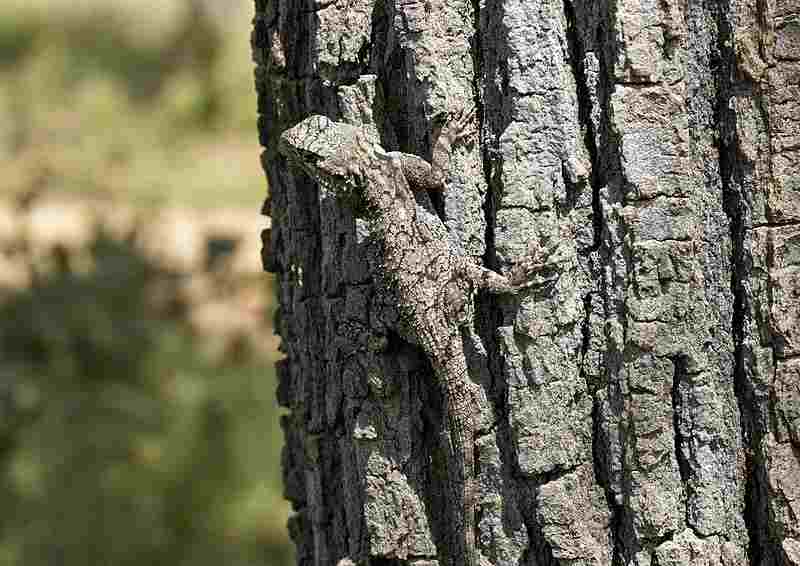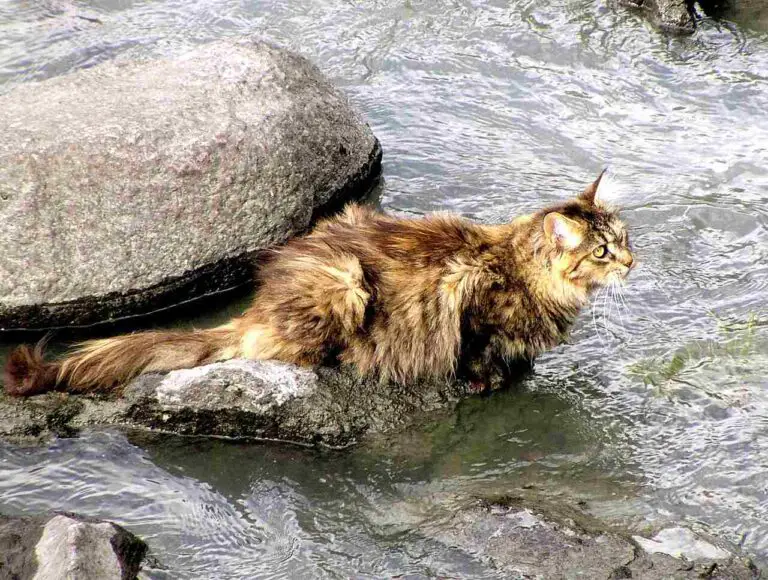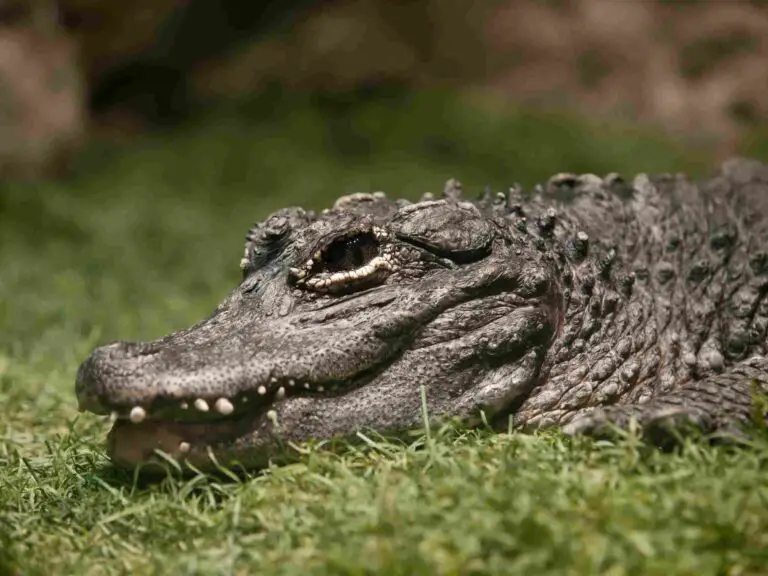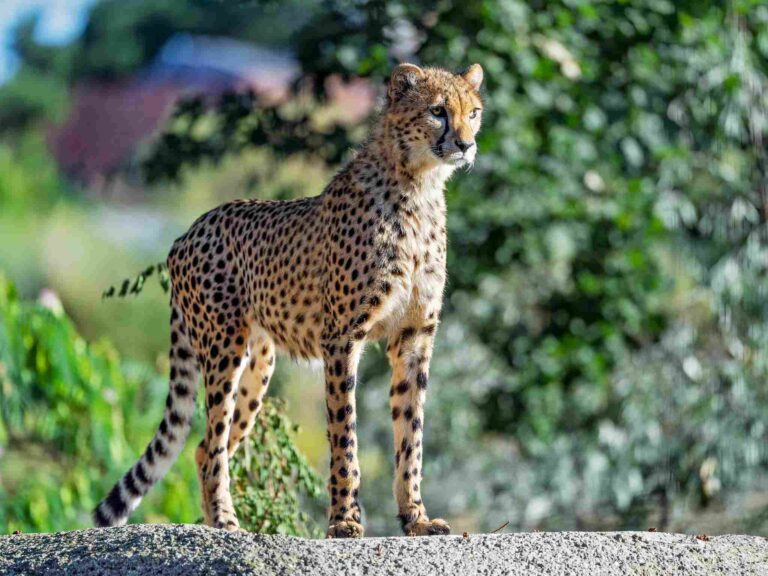Wild Rabbit Vs Domestic Rabbit Meat Characteristics, Overall Comparison
Exploring the distinctions between wild and domestic rabbits provides valuable insights into the behavioral, physical, and environmental differences within these lagomorphs. Wild rabbit meat tends to have a denser, gamier flavor with higher nutritional diversity, while domestic rabbit meat is often leaner, milder, and influenced by selective breeding and human-provided diets.
I. Physical Characteristics:
– Wild rabbits, often characterized by straight or “uppy” ears and slender faces, exhibit visual differences from their domestic counterparts. Domestic rabbits, on the other hand, come in various sizes and colors, and their ears can be floppy or upright.
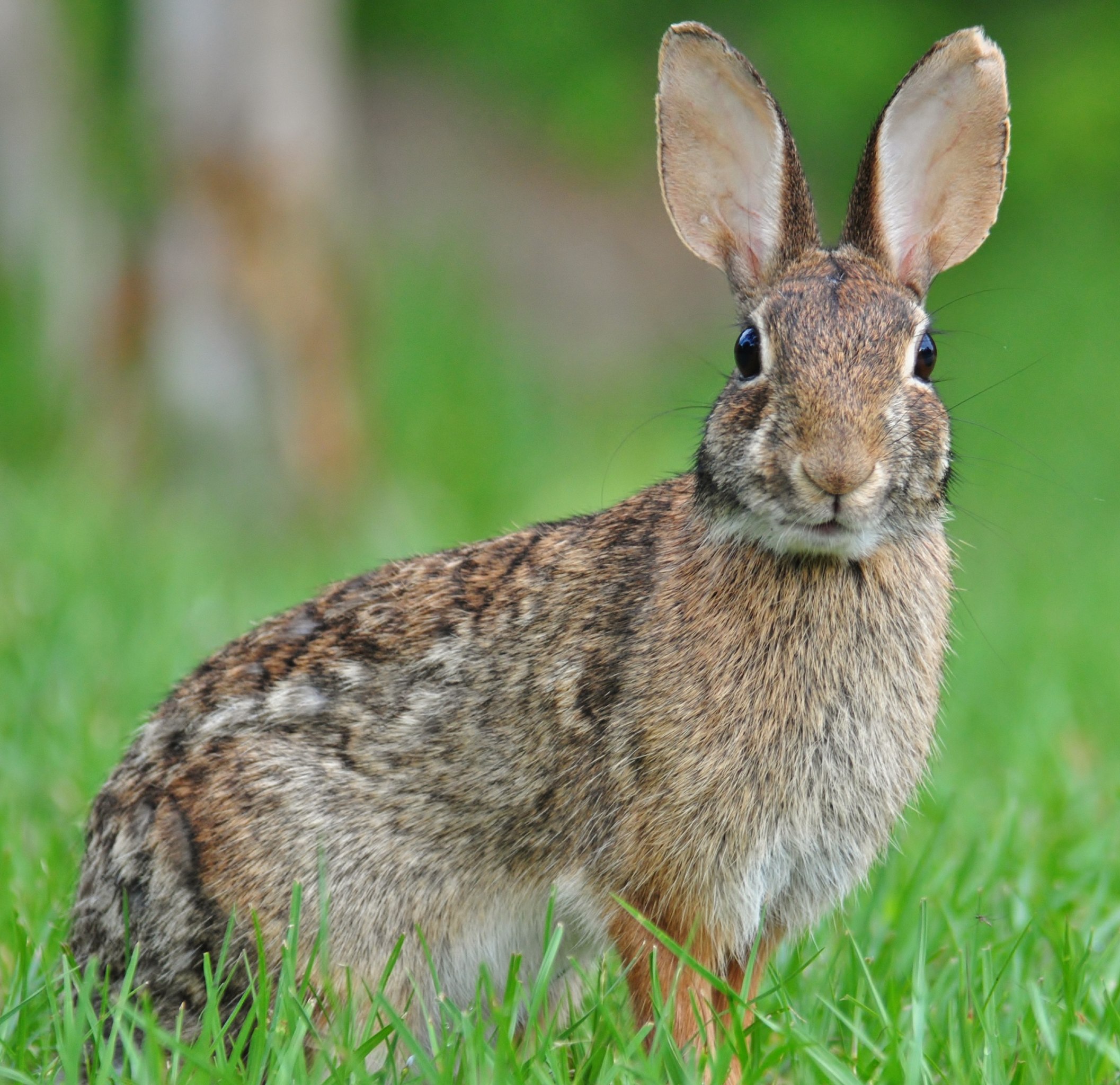
II. Life Span and Sizes:
– Wild rabbits, being adapted to the challenges of the wild, may have a shorter life span than domestic rabbits, which can live longer with proper care. In terms of size, wild rabbits typically remain smaller, not exceeding a few pounds in weight, with slender faces and long legs.
III. Behavior and Social Hierarchy:
– Wild rabbits, being solitary creatures, contrast with the social nature of domestic rabbits. Understanding the behavioral differences contributes to responsible care and interaction, recognizing that domestic rabbits can thrive indoors as companions.
IV. Housing and Environment:
– While domestic rabbits are well-suited to indoor living, wild rabbits are equipped for outdoor life. Recognizing these environmental preferences ensures the well-being of both wild and domesticated lagomorphs.
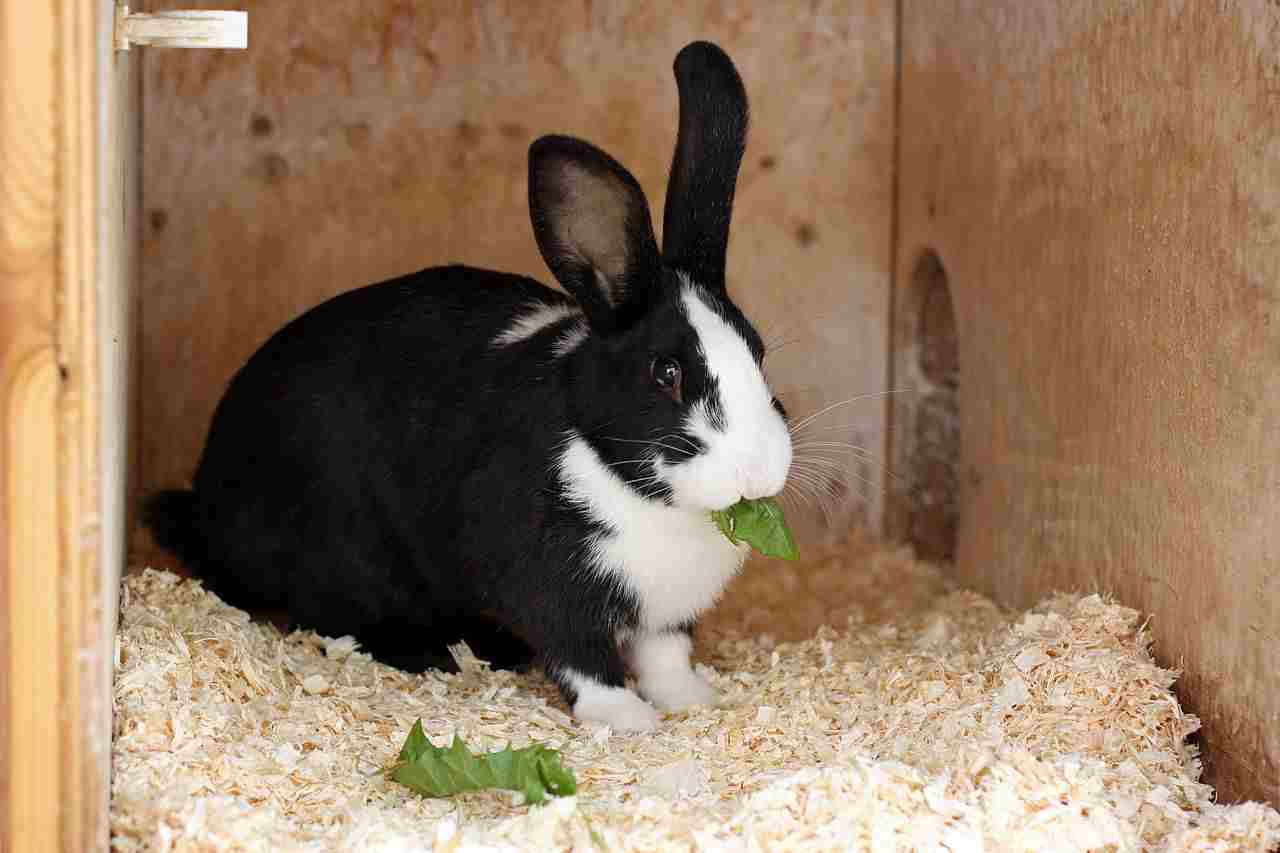
V. Visual Identification:
– Distinguishing between wild and domestic rabbits can be facilitated by visual cues such as coloration. Domestic rabbits may display a range of colors like black, white, gray, striped, or spotted, setting them apart from the appearance of their wild counterparts.
VI. Care Considerations:
– Domesticated rabbits can thrive with human interaction, either being extremely friendly or skittish based on their experiences. Conversely, wild rabbits may display behaviors shaped by their survival instincts in the wild.
VII. Breeds and Genetic Variations:
– Domestic rabbits come in various breeds, such as the Californian rabbit, French Lop, Netherland Dwarf rabbit, and others. Understanding these breed differences contributes to responsible breeding and care practices.
VIII. Wild Rabbit vs Domestic Rabbit Meat Comparison
The choice between wild and domestic rabbit meat depends on personal preferences regarding taste, texture, and the culinary experience. Wild rabbit offers a more gamy and complex flavor, while domestic rabbit, being leaner, provides a milder taste. The influence of diet, breeding, and cooking techniques further contributes to the distinctive qualities of each type of meat.
| Criteria | Wild Rabbit Meat |
Domestic Rabbit Meat
|
| Nutritional Benefits | Higher levels of certain nutrients due to natural diet |
Often leaner, potential variations due to breeding
|
| Cooking Differences | Denser texture and potentially gamier flavor |
Less gamey, finer, denser texture
|
| Taste and Aroma | More complex flavor, slightly gamier |
Lighter, pinkish meat, milder flavor
|
| Dietary Variation | Relies on natural diet, contributing to distinct taste and aroma |
Diet influenced by human-provided food, impacting meat characteristics
|
| Texture and Essence | Drier and leaner meat |
Less gamey, less dense, taste akin to chicken or pork
|
| Health Benefits | High in protein, low in fat |
High in protein, low in fat
|
| Cooking Techniques | Requires different techniques due to denser texture and distinct flavor |
Cooking methods may vary, generally less gamey
|
| Meat Quality Evaluation | Comparative studies indicate variations in protein, fat, and heme iron content |
Varied protein and fat content based on breeding and diet
|
| Perceived Differences | Consumers note differences in aroma, texture, and flavor |
Preference varies based on personal taste and culinary experience
|
*Details of Comparison
| Criteria | Wild Rabbit | Domestic Rabbit |
| Appearance | Natural colors for camouflage |
Diverse colors due to selective breeding
|
| Size | Generally smaller for agility |
Varies widely based on breed
|
| Weight | Lighter, influenced by natural factors |
Heavier, influenced by selective breeding
|
| Dentition and Bite Force | Similar herbivorous dentition, potential variations |
Dental differences, impacting ecological role
|
| Physical Offensive Advantages | Sharp claws and teeth for defense |
Limited offensive adaptations due to breeding
|
| Physical Defensive Advantages | Agility and burrowing abilities |
May rely more on human protection
|
| Speed | Faster, up to 45 km/h |
Generally not as fast
|
| Agility | Highly agile for survival |
Agility varies, potentially reduced
|
| Senses | Similar acute senses, potential variations |
Altered sensory perceptions in domestic may impact adaptation
|
| Overall Physical Capacity | Evolved for natural challenges |
Influenced by selective breeding, variable
|
| Habitat Preference and Region | Natural habitats across continents |
Adaptable to human-created environments
|
| Tracks | Distinctive tracks with small paired imprints |
Tracks may vary, impacting tracking accuracy
|
| Lifespan | Shorter, influenced by predation |
Longer, influenced by breed and care
|
| Mode of Feeding | Both herbivorous but diet sources may differ |
Domestic diet may impact ecological role if released
|
| Intelligence | Both display intelligence, domestic may vary |
Differences in adaptability and response to challenges
|
| Social Behavior | Both exhibit social behavior, variable in domestic |
Impacts integration into natural environments
|
| Mode of Reproduction | Similar mechanisms; domestic influenced by breeding |
Ecological impact if domestic rabbits reproduce prolifically in the wild
|
| Parental Behavior | Similar instincts, behavioral differences due to breeding |
Varied parental behaviors may impact offspring survival
|
| Proximity to Human Areas | Prefers natural habitats |
Often kept in human-inhabited areas
|
| Behavior Toward Humans | Cautious, tendency to flee |
Varied behaviors, more tolerant generally
|
| Danger Posed to Humans |
Both pose minimal danger; domestic may exhibit defensive behaviors
|
|
| Associated Precautions | Precautions needed for both, nature differs |
Consider disease transmission risks and impacts on populations
|
| Conservation Status | Species-specific conservation statuses |
Not a conservation priority
|
Key Points
Similarities:
-
- Fundamental lagomorph characteristics.
Differences:
-
- Arise from domestication, selective breeding, and environmental influences, influencing ecological roles.
1. Taxonomy:
Wild Rabbit:
Kingdom: Animalia
Phylum: Chordata
Class: Mammalia
Order: Lagomorpha
Family: Leporidae
Genus: Oryctolagus
Species: O. cuniculus (European rabbit)
Domestic Rabbit:
Kingdom: Animalia
Phylum: Chordata
Class: Mammalia
Order: Lagomorpha
Family: Leporidae
Genus: Oryctolagus
Species: O. cuniculus (Same as wild rabbit)
2. Appearance:
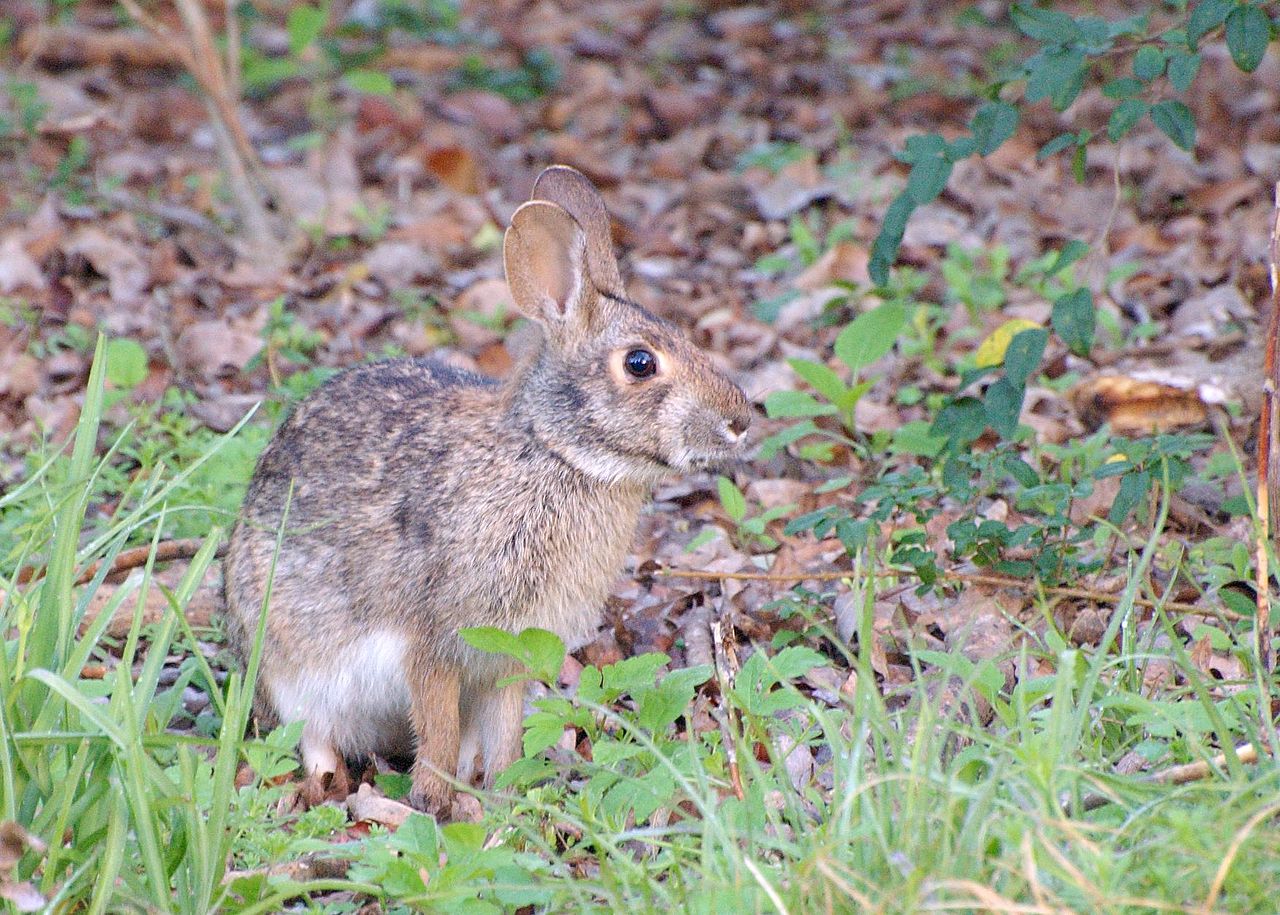
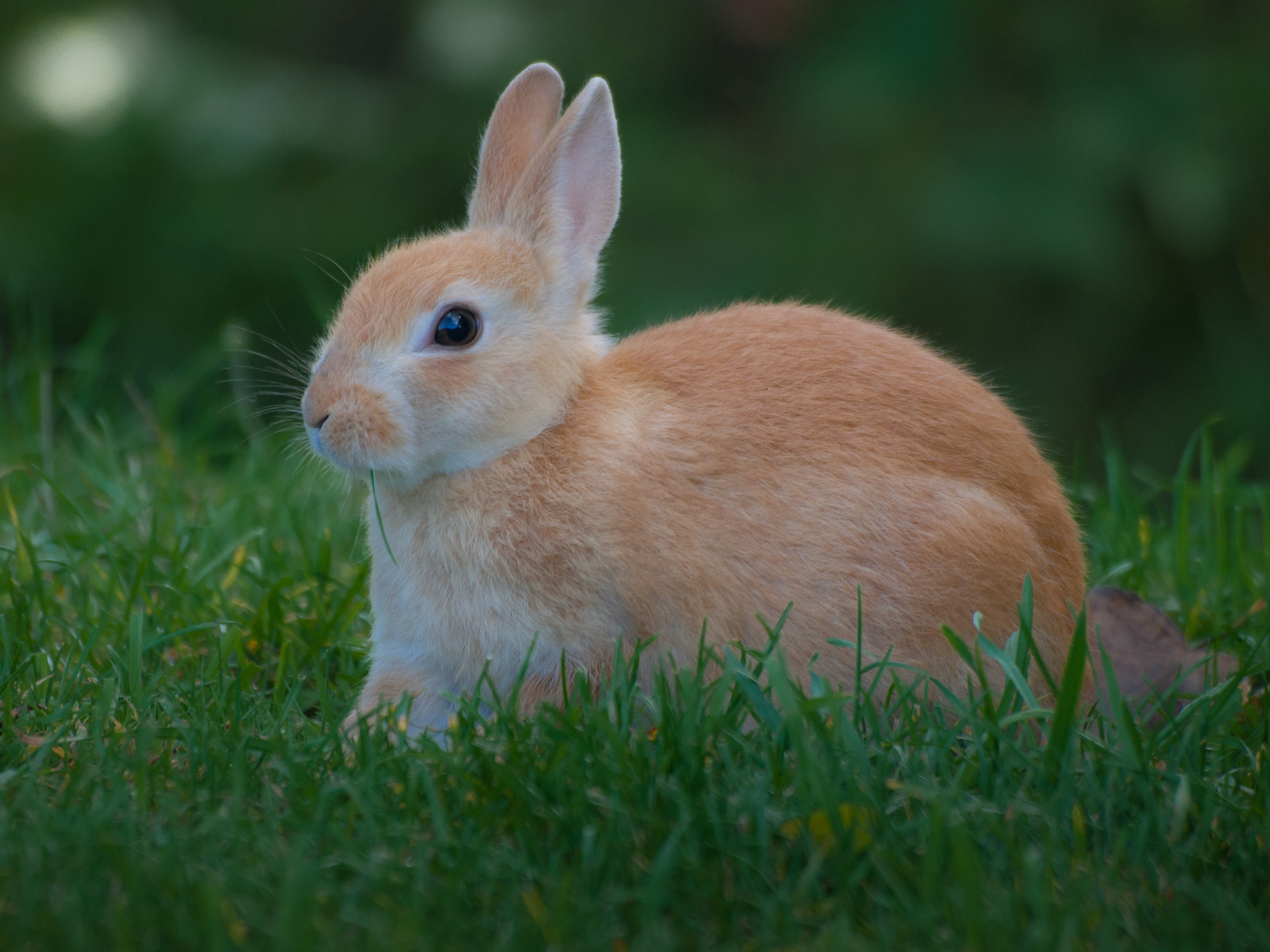
Wild Rabbit:
Typically has a brown or gray fur color, providing camouflage in natural habitats.
Ears are erect, and body is streamlined for agility in the wild.
Eyes are large, aiding in detecting predators.
Domestic Rabbit:
Displays a variety of colors and patterns due to selective breeding.
Ears may vary in size, and body shapes can differ based on breeds.
May have a plusher coat compared to wild counterparts.
Comparison: Domestic rabbits exhibit more diverse appearances owing to human-driven breeding practices, while wild rabbits have evolved for effective camouflage and survival in their natural environment.
Ecological Implications: Selective breeding for appearance in domestic rabbits may inadvertently impact genetic diversity, potentially affecting their resilience to environmental changes.
3. Size:
Wild Rabbit:
Generally smaller in size to enhance agility in natural habitats.
Adult European rabbits can have a body length of about 40 cm (16 inches).
Domestic Rabbit:
Size can vary widely based on breed; some are compact, while others are larger.
Domestic breeds may be selectively bred for specific sizes.
Comparison: Domestic rabbits may display a broader range of sizes due to artificial selection, whereas wild rabbits are more constrained by natural selection.
Ecological Implications: Size variations in domestic rabbits might influence their adaptability if released into the wild, potentially impacting interactions with native species.
4. Weight:
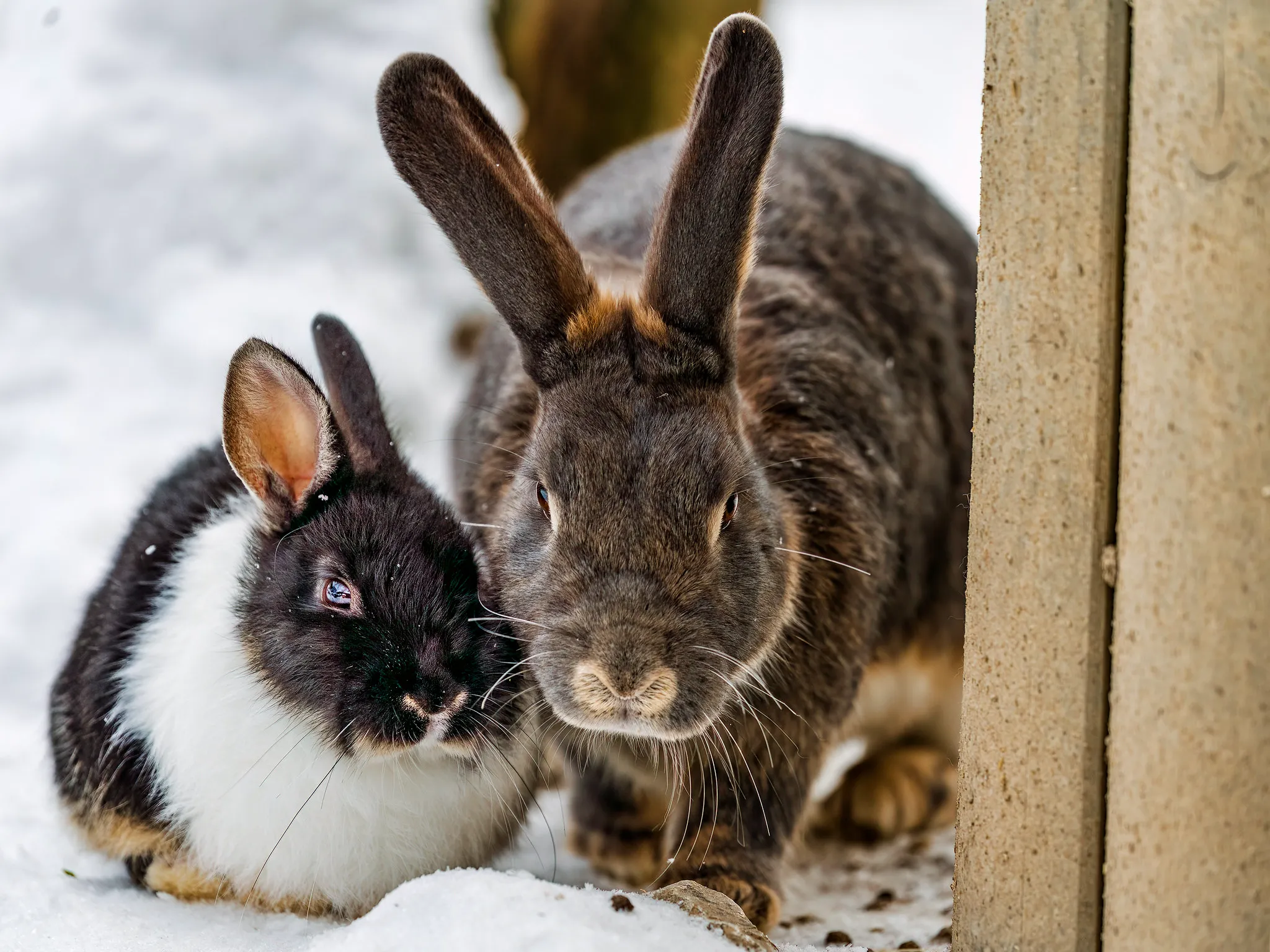
Wild Rabbit:
Weight varies by species; European rabbits weigh around 1.2 to 2.0 kg (2.6 to 4.4 lbs).
Domestic Rabbit:
Weight varies significantly based on breed; can range from less than a kilogram to several kilograms.
Comparison: Domestic rabbits can be substantially heavier than their wild counterparts, with a wider range of weights across different breeds.
Ecological Implications: Weight differences may influence the ecological role of domestic rabbits if introduced to natural ecosystems, potentially affecting local vegetation and predator-prey dynamics.
5. Dentition and Bite Force (PSI):
Wild Rabbit:
Herbivorous with sharp, continuously growing incisors adapted for chewing vegetation.
Bite force is adapted for efficient herbivory.
Domestic Rabbit:
Similar herbivorous dentition, but specific breeds may have variations in tooth structure.
Domestic rabbits may exhibit variations in bite force depending on individual health and genetic factors.
Comparison: Basic dentition is similar in both wild and domestic rabbits, but selective breeding might lead to minor variations.
Ecological Implications: Dental differences may impact the ability of domestic rabbits to consume and process natural vegetation, potentially influencing their ecological role if introduced to the wild.
6. Physical Offensive Advantages:
Wild Rabbit:
Sharp claws and teeth for self-defense and acquiring food.
Agile and swift, able to escape predators easily.
Domestic Rabbit:
Generally lacks strong offensive adaptations as they are bred for docility.
Limited defensive instincts compared to their wild counterparts.
Comparison: Wild rabbits possess evolved offensive adaptations for survival, while domestic rabbits may lack such traits due to human-driven breeding for temperament.
Ecological Implications: Domestic rabbits may face challenges when released into the wild, as their reduced offensive capabilities could affect their ability to fend off predators.
7. Physical Defensive Advantages:
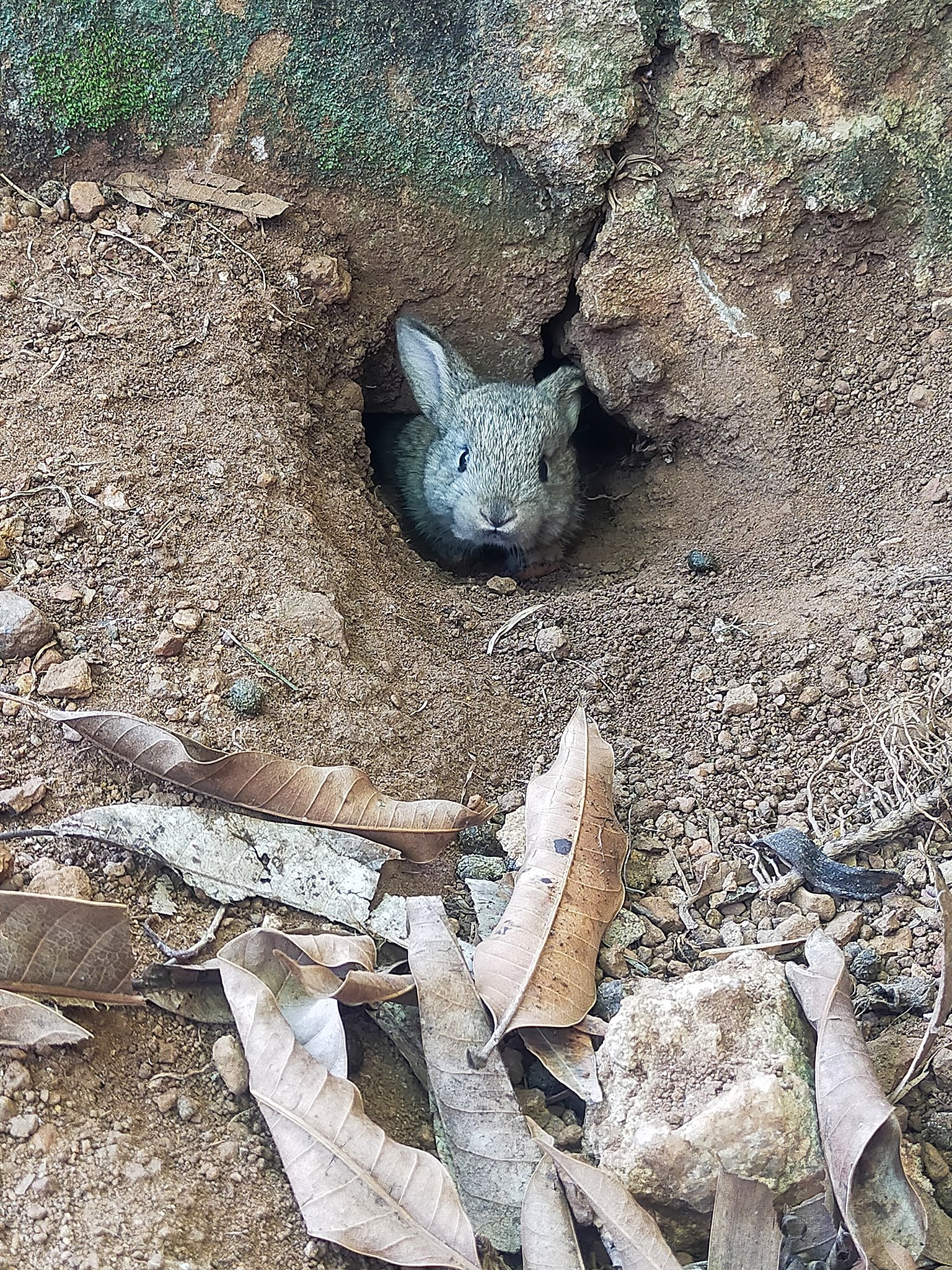
Wild Rabbit:
Excellent agility for dodging predators.
Burrowing ability provides a safe refuge.
Domestic Rabbit:
May rely more on human protection, lacking natural defensive adaptations.
Limited burrowing instincts compared to wild rabbits.
Comparison: Wild rabbits are naturally equipped with defensive adaptations, including agility and burrowing abilities, which may be less pronounced or absent in domestic counterparts.
Ecological Implications: The absence of strong defensive instincts in domestic rabbits could pose challenges in adapting to and surviving in the wild.
8. Speed (Km/hour or Mile/hour):
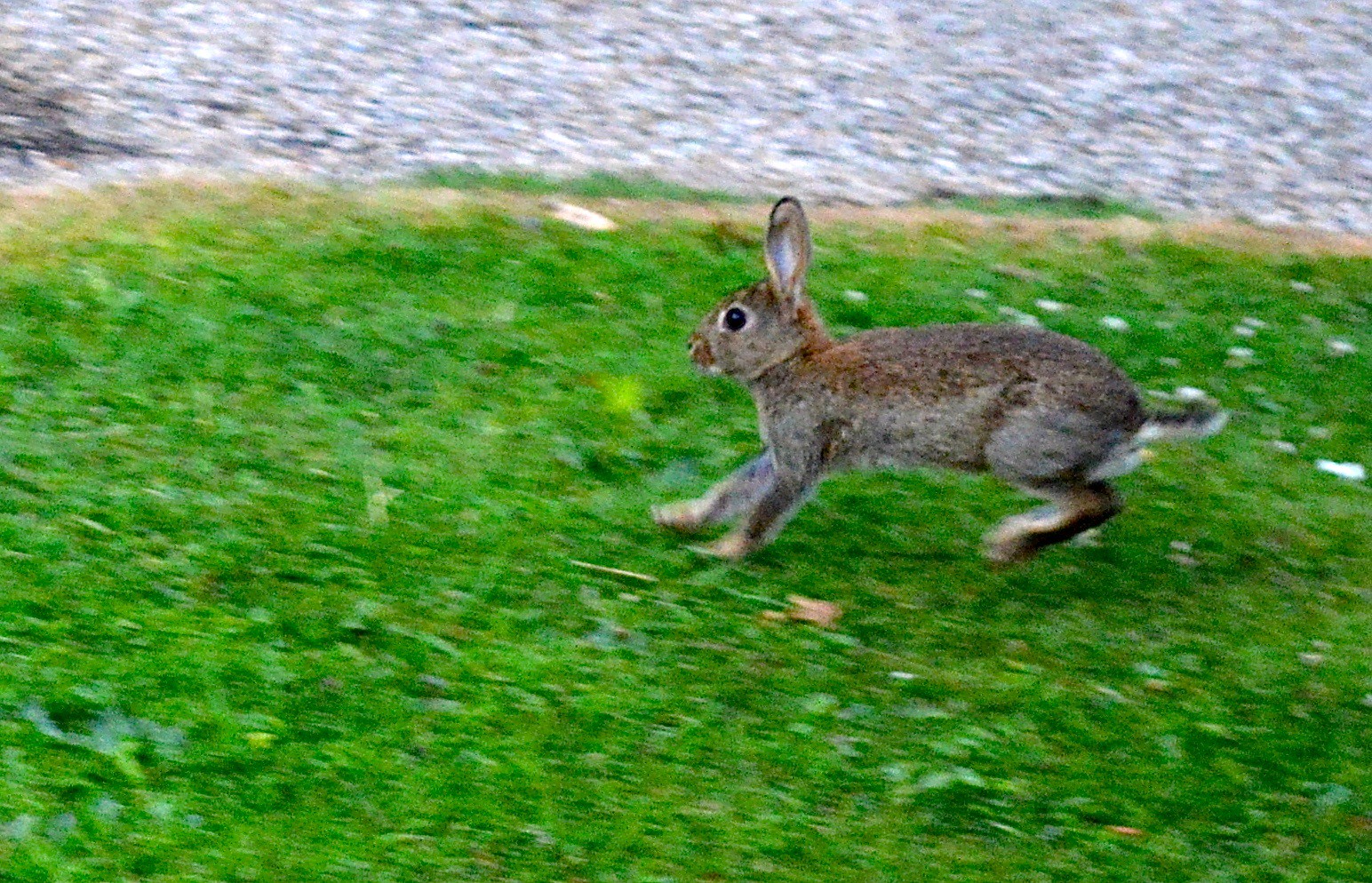
Wild Rabbit:
Can reach speeds of up to 45 km/h (28 mph).
Swift runners, enhancing chances of escape from predators.
Domestic Rabbit:
Generally not as fast as wild counterparts.
Speed may vary among breeds, but they typically lack the same agility.
Comparison: Wild rabbits exhibit greater speed and agility compared to most domestic breeds.
Ecological Implications: In natural ecosystems, the reduced speed and agility of domestic rabbits may impact their ability to evade predators, affecting their overall survival.
9. Agility:
Wild Rabbit:
Highly agile, capable of swift movements and sharp turns.
Navigates diverse terrains with ease.
Domestic Rabbit:
Agility varies among breeds but generally less pronounced compared to wild rabbits.
Domestic rabbits may not possess the same level of agility due to selective breeding for other traits.
Comparison: Wild rabbits have evolved for enhanced agility, a trait that may be diminished or altered in domestic rabbits due to breeding practices.
Ecological Implications: The reduced agility in domestic rabbits might impact their ability to navigate natural landscapes, potentially affecting their survival and interaction with the ecosystem.
10. Senses:
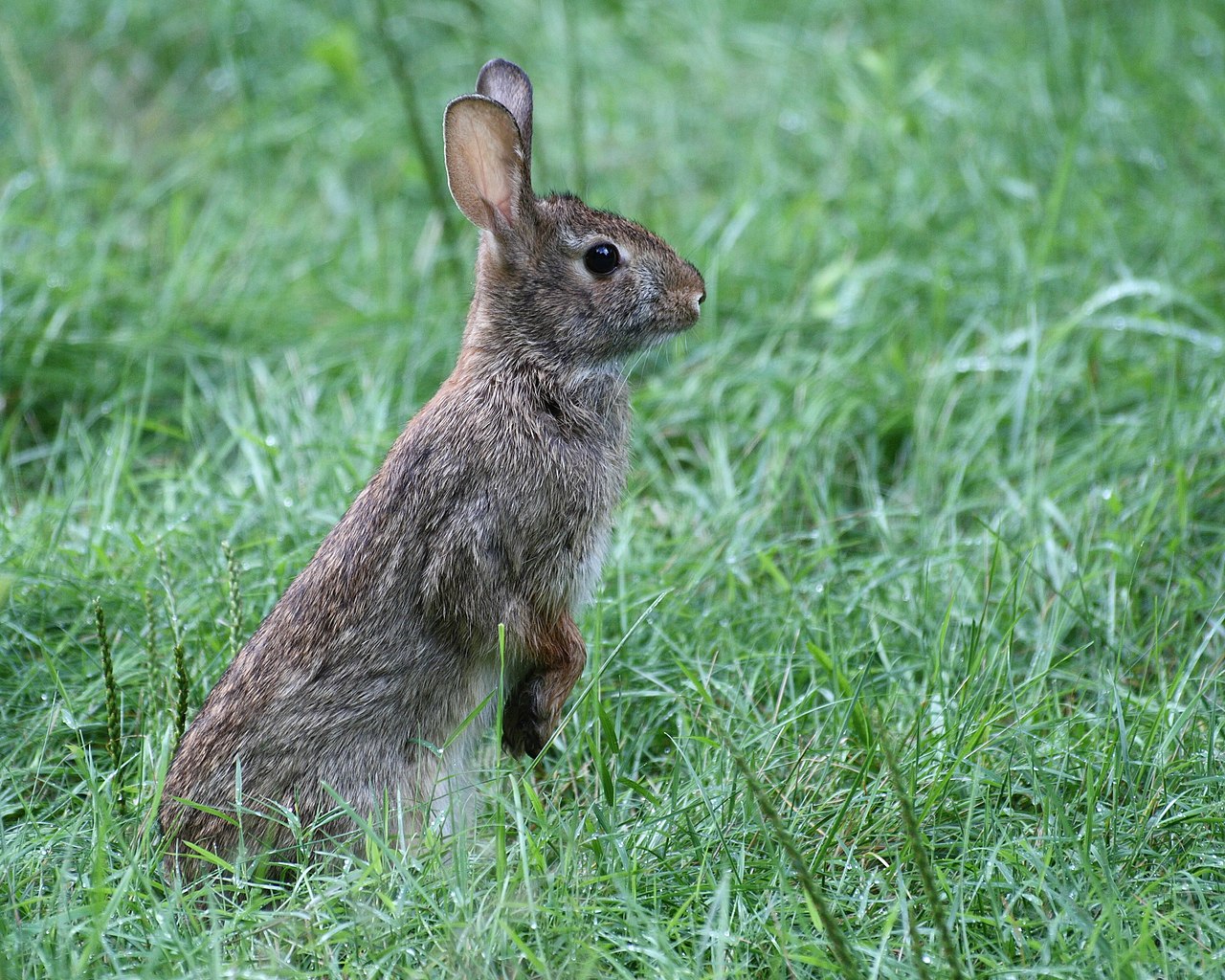
Wild Rabbit:
Acute senses of hearing and smell to detect predators.
Well-developed vision for situational awareness.
Domestic Rabbit:
Retains similar sensory capabilities, but selective breeding might influence variations.
May have differences in sensory perception depending on specific breeds.
Comparison: While domestic rabbits generally maintain heightened senses, variations may exist due to selective breeding for certain traits.
Ecological Implications: Altered sensory perceptions in domestic rabbits could impact their ability to detect threats or find food in a natural environment.
11. Overall Physical Capacity:
Wild Rabbit:
Evolved for survival in natural ecosystems, with adaptations for agility, speed, and defense.
Well-suited for the challenges of the wild, including foraging and escaping predators.
Domestic Rabbit:
Physical traits may vary widely based on breed.
Adaptations may be influenced by selective breeding for specific traits, potentially impacting overall physical capacity.
Comparison: Wild rabbits are shaped by natural selection for a balance of physical capacities, while domestic rabbits may have variations driven by human selection.
Ecological Implications: Changes in overall physical capacity due to selective breeding might affect the ability of domestic rabbits to thrive in the wild.
12. Habitat Preference(s) and Geographic Region:
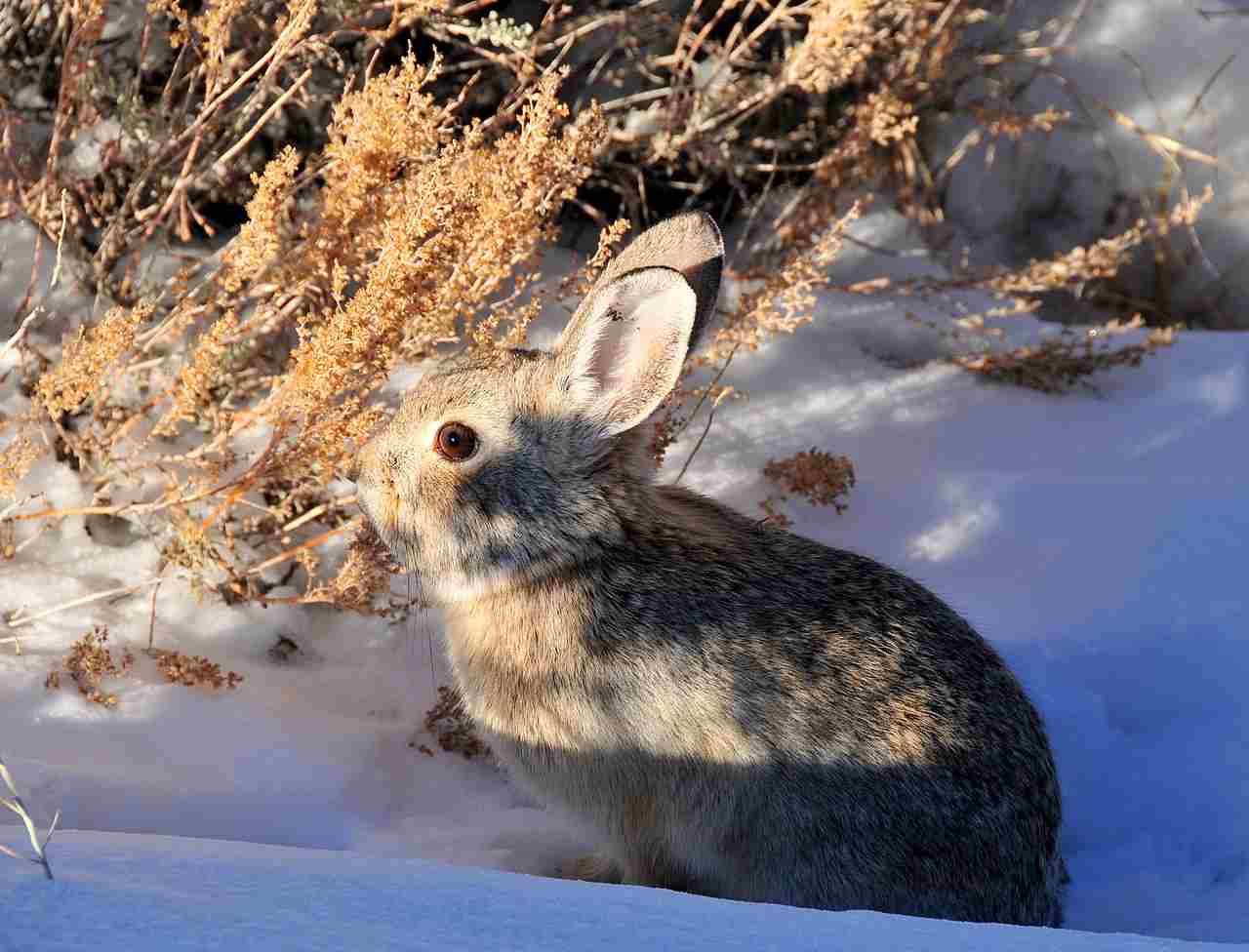
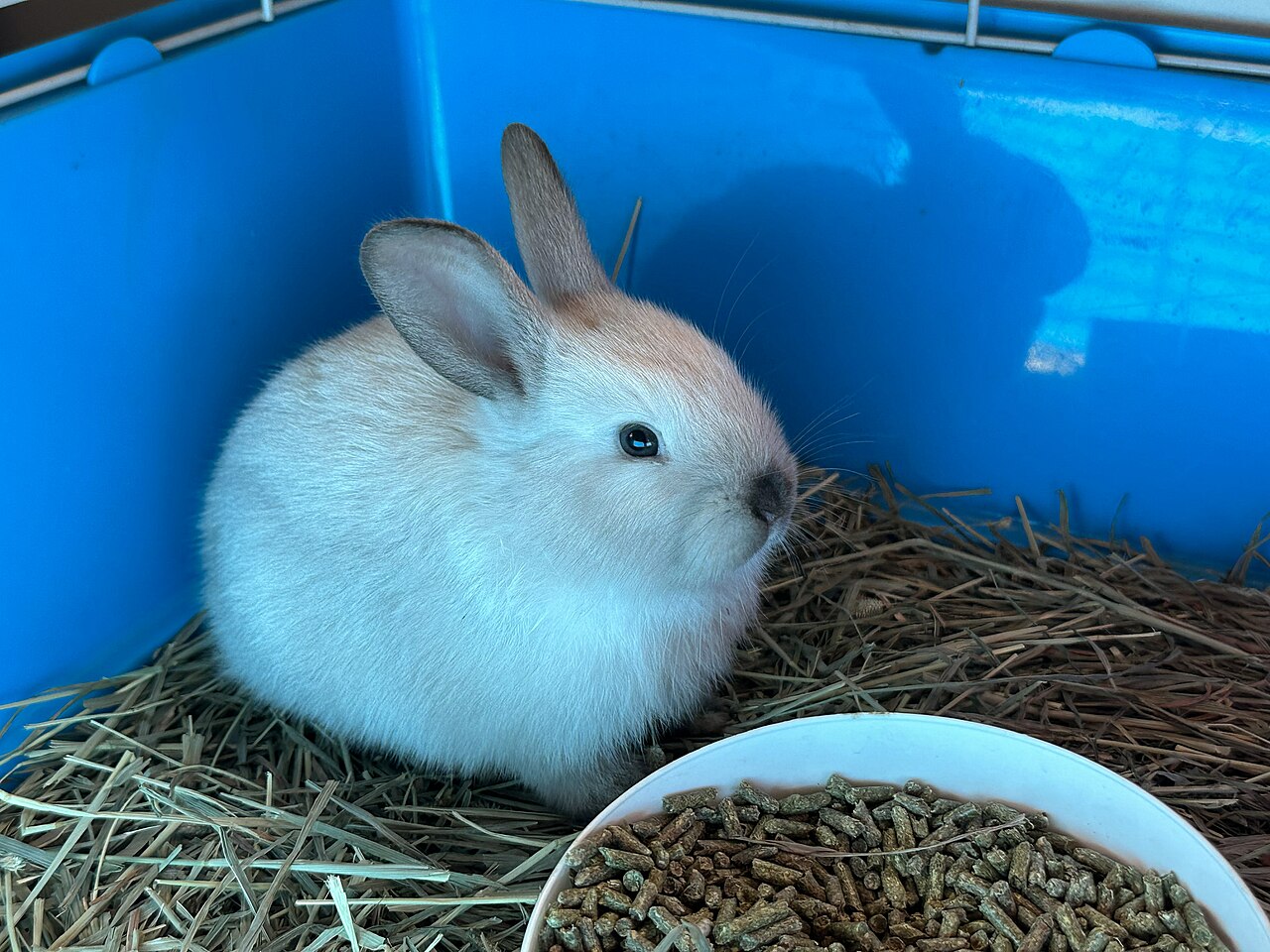
Wild Rabbit:
Prefers a variety of natural habitats, including grasslands, forests, and meadows.
Found in regions spanning Europe, Asia, and Africa.
Domestic Rabbit:
Adaptable to human-created environments, often kept as pets or in controlled settings.
Globally distributed due to human domestication.
Comparison: Wild rabbits exhibit diverse habitat preferences across continents, while domestic rabbits are often associated with human-inhabited areas.
Ecological Implications: The adaptability of domestic rabbits to human environments may pose challenges if they escape into natural ecosystems, potentially impacting local flora and fauna.
13. Tracks:
Wild Rabbit:
Distinctive tracks with small, paired imprints from their four toes.
Hind foot often larger than the front foot, showcasing their characteristic gait.
Domestic Rabbit:
Tracks may be less pronounced and variable, depending on the substrate.
Domestic rabbits may leave tracks similar to wild counterparts but with potential variations.
Comparison: While both wild and domestic rabbits leave tracks, wild rabbit tracks may exhibit more consistent features related to their natural locomotion.
Ecological Implications: Recognition of tracks is crucial for ecological studies, and the potential variability in domestic rabbit tracks may impact accurate tracking and monitoring in natural environments.
14. Lifespan:
Wild Rabbit:
Average lifespan varies by species but generally ranges from 1 to 2 years in the wild.
Influenced by predation, environmental conditions, and disease.
Domestic Rabbit:
Typically longer lifespan, ranging from 5 to 12 years or more.
Lifespan influenced by breed, diet, and healthcare.
Comparison: Domestic rabbits generally live longer lives compared to their wild counterparts due to controlled environments and reduced predation.
Ecological Implications: Extended lifespans in domestic rabbits may affect their ecological impact if released into the wild, potentially altering population dynamics and resource utilization.
15. Mode of Feeding:
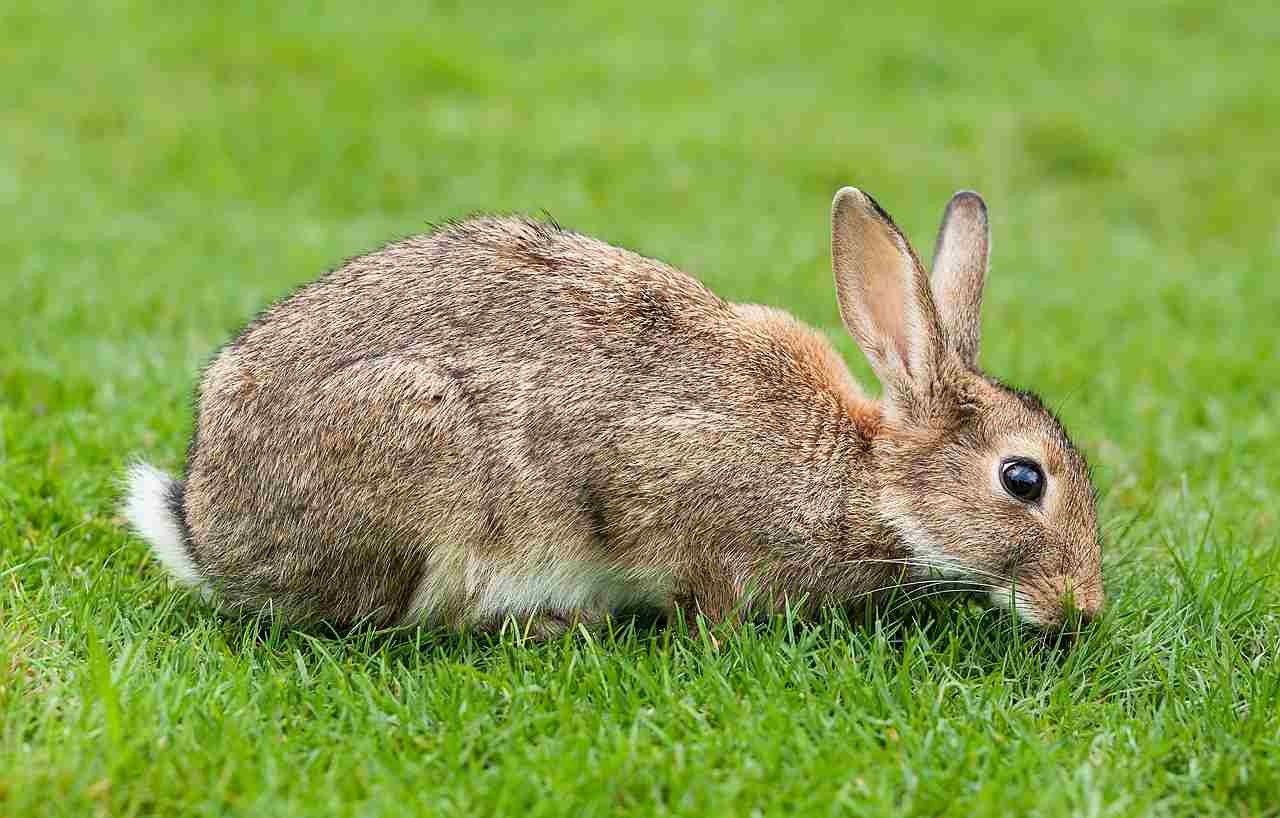
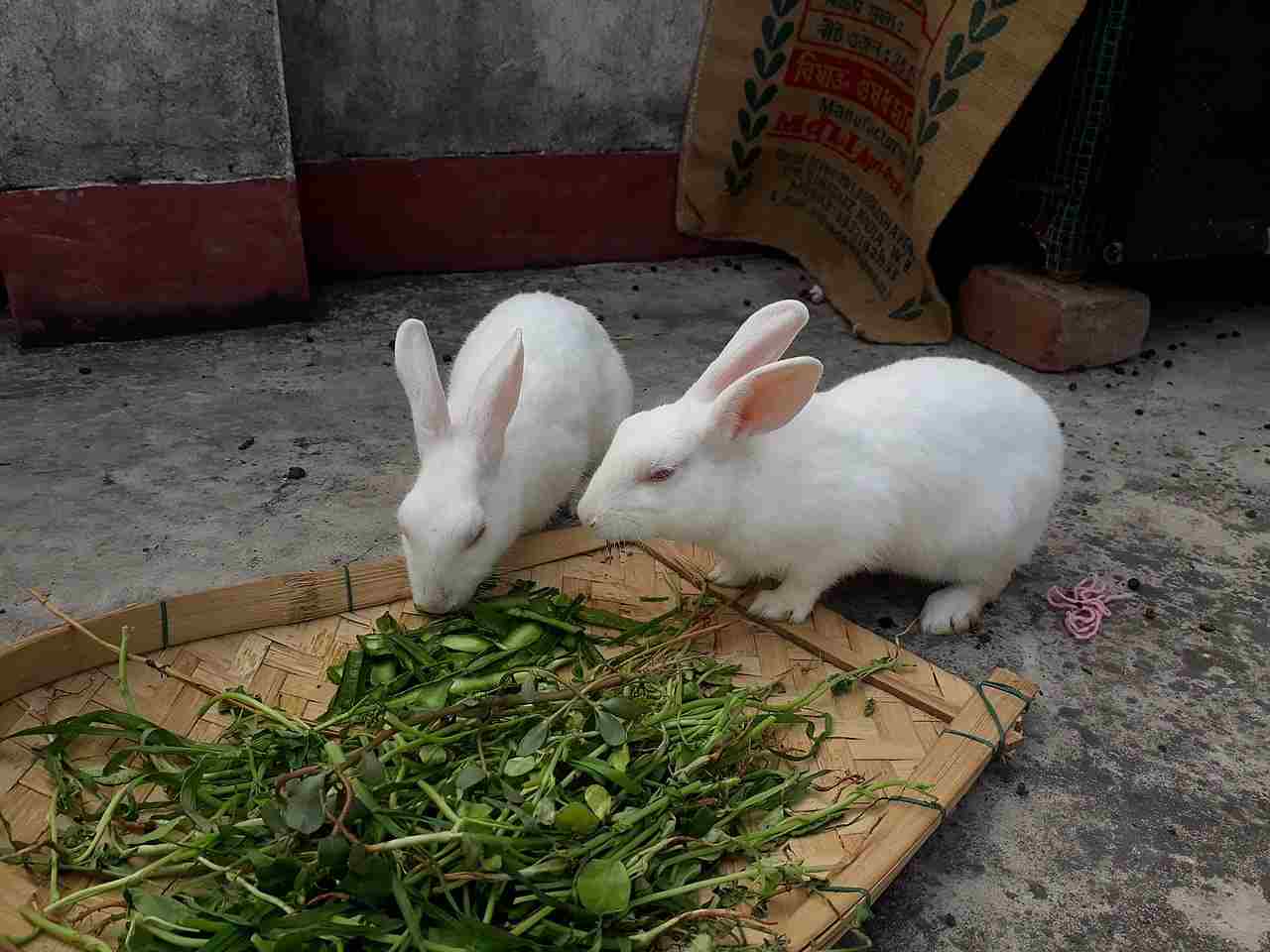
Wild Rabbit:
Herbivorous, primarily consuming grasses, plants, and bark.
Constantly grazes to meet dietary needs.
Domestic Rabbit:
Also herbivorous, but diet may include commercial pellets and vegetables.
Feeding patterns influenced by human-provided diets.
Comparison: Both wild and domestic rabbits share a herbivorous diet, but the source and composition of their food may differ.
Ecological Implications: Shifts in diet due to domestication may impact the ecological role of rabbits if they escape into natural environments, affecting local vegetation.
16. Intelligence:
Wild Rabbit:
Exhibits instincts and behaviors essential for survival.
Displays intelligence in terms of foraging, evasion, and burrow construction.
Domestic Rabbit:
Varied intelligence among breeds; some can be trained for certain behaviors.
May exhibit social intelligence in interactions with humans and other rabbits.
Comparison: While both wild and domestic rabbits display intelligence, domestication may introduce variability in cognitive abilities.
Ecological Implications: Differences in intelligence may influence the adaptability of domestic rabbits in the wild, affecting their ability to navigate and respond to environmental challenges.
17. Social Behavior:
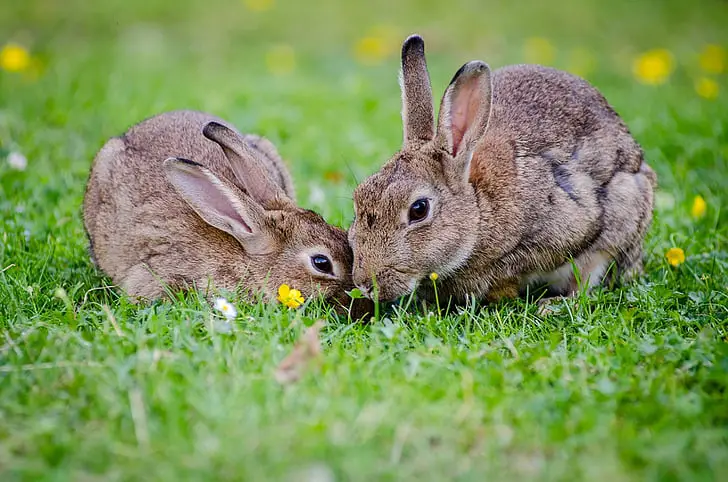
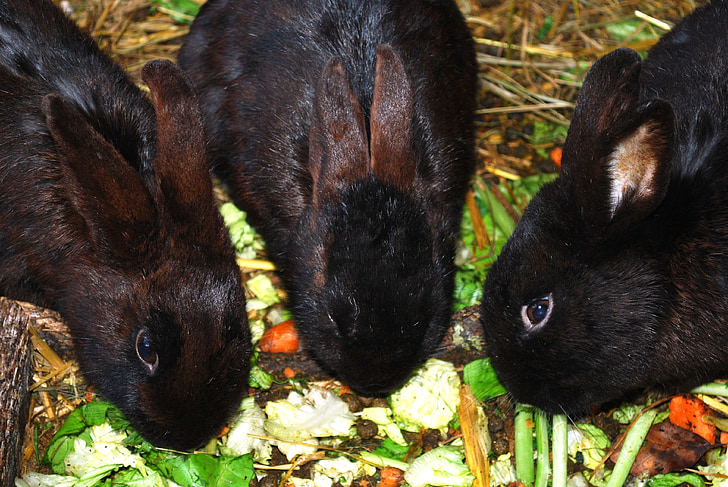
Wild Rabbit:
Often lives in social groups, forming colonies or warrens.
Displays complex social hierarchies and communication.
Domestic Rabbit:
Social behavior varies; some breeds are more sociable than others.
May form bonds with humans or other rabbits.
Comparison: Social behaviors in domestic rabbits may differ due to selective breeding, but the underlying instincts for social interaction are retained.
Ecological Implications: The social dynamics of domestic rabbits may influence their integration into wild environments, impacting interactions with native species and potentially affecting ecosystem balance.
18. Mode of Reproduction:
Wild Rabbit:
Exhibits rapid reproductive rates with multiple litters per year.
Gestation period is around 30 days, and offspring are altricial (born hairless and dependent).
Domestic Rabbit:
Reproduction rates may be controlled by humans through breeding practices.
Gestation period and reproductive patterns influenced by breed and human management.
Comparison: While both wild and domestic rabbits reproduce through similar mechanisms, the timing and frequency may vary due to human intervention in domestic rabbits.
Ecological Implications: If domestic rabbits reproduce prolifically in the wild, it could impact local ecosystems and potentially lead to competition with native species.
19. Parental Behavior:
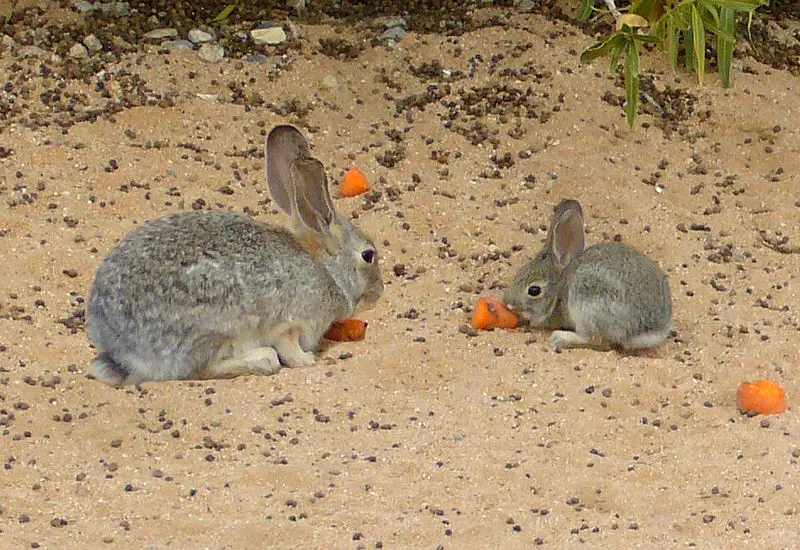
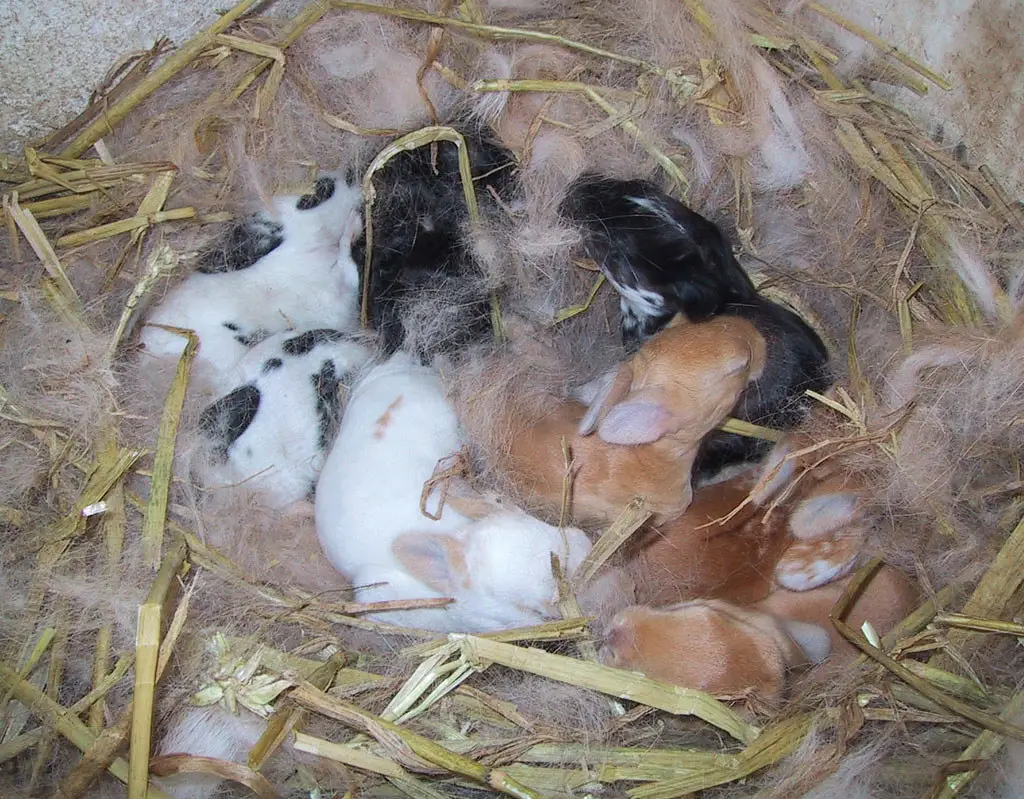
Wild Rabbit:
Exhibits maternal care, providing protection and nursing for offspring.
Mothers create burrows for the safety of their kits.
Domestic Rabbit:
Maternal behaviors may be influenced by breed and human interactions.
May exhibit protective instincts, but the degree can vary.
Comparison: Basic parental instincts are retained in domestic rabbits, but specific behaviors may differ due to selective breeding.
Ecological Implications: Varied parental behaviors in domestic rabbits may impact the survival rates of offspring if released into the wild, potentially affecting local fauna.
20. Proximity to Human-Inhabited Areas:

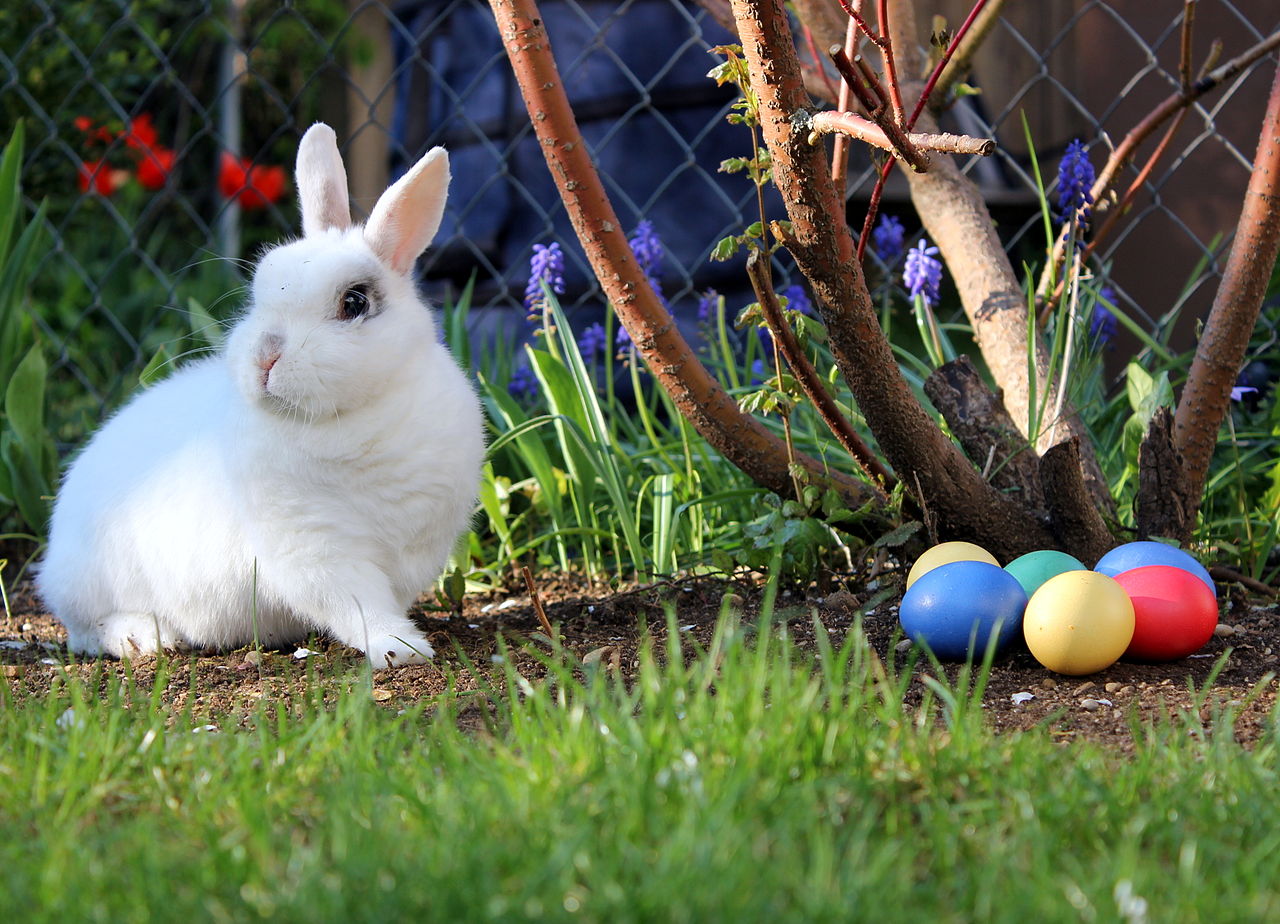
Wild Rabbit:
Prefers natural habitats away from human settlements.
May adapt to rural areas but tends to avoid direct human contact.
Domestic Rabbit:
Often found in human-inhabited areas as pets or in controlled environments.
May be kept indoors or in outdoor enclosures.
Comparison: Wild rabbits typically avoid close proximity to humans, whereas domestic rabbits are intentionally kept in human-inhabited areas.
Ecological Implications: The release of domestic rabbits into the wild may lead to potential conflicts with native wildlife or ecological imbalances in natural habitats.
21. Behavior Toward Humans:
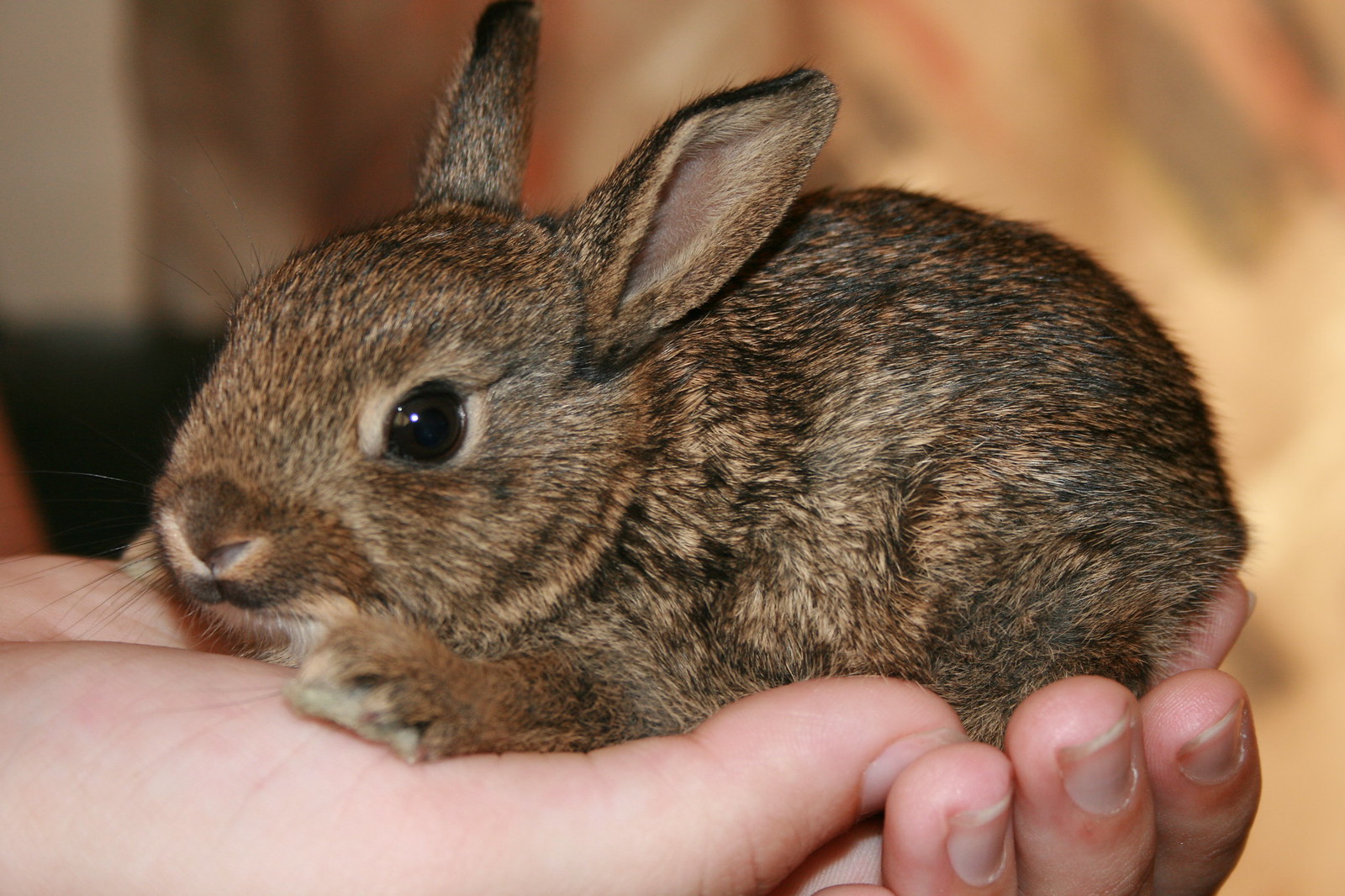
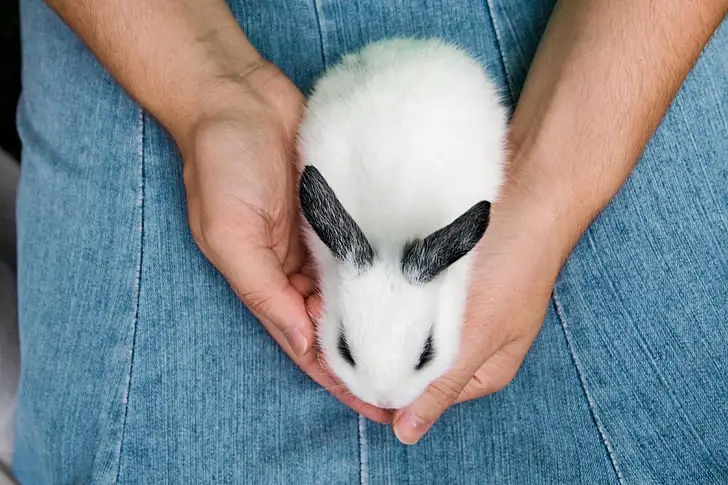
Wild Rabbit:
Displays wariness and tends to flee from human presence.
Evolved to be cautious due to natural predation risks.
Domestic Rabbit:
Behavior varies; some breeds are more sociable and may seek human interaction.
Generally more tolerant of human presence compared to wild counterparts.
Comparison: Domestic rabbits often exhibit a more varied range of behaviors toward humans compared to the typically cautious nature of wild rabbits.
Ecological Implications: The behavior of domestic rabbits toward humans may influence their ability to coexist in natural ecosystems, potentially impacting interactions with native species.
22. Danger Posed to Humans:
Wild Rabbit:
Generally poses minimal danger to humans; tendency to flee rather than confront.
May carry diseases that can be transmitted to humans, but direct danger is low.
Domestic Rabbit:
Typically poses low danger; may scratch or bite if threatened or mishandled.
Domesticated breeds are not inherently aggressive toward humans.
Comparison: Both wild and domestic rabbits usually pose minimal danger to humans, but domestic rabbits may exhibit defensive behaviors if they feel threatened.
Ecological Implications: If domestic rabbits are released into the wild, their defensive behaviors might influence interactions with humans and other wildlife.
23. Associated Precautions:
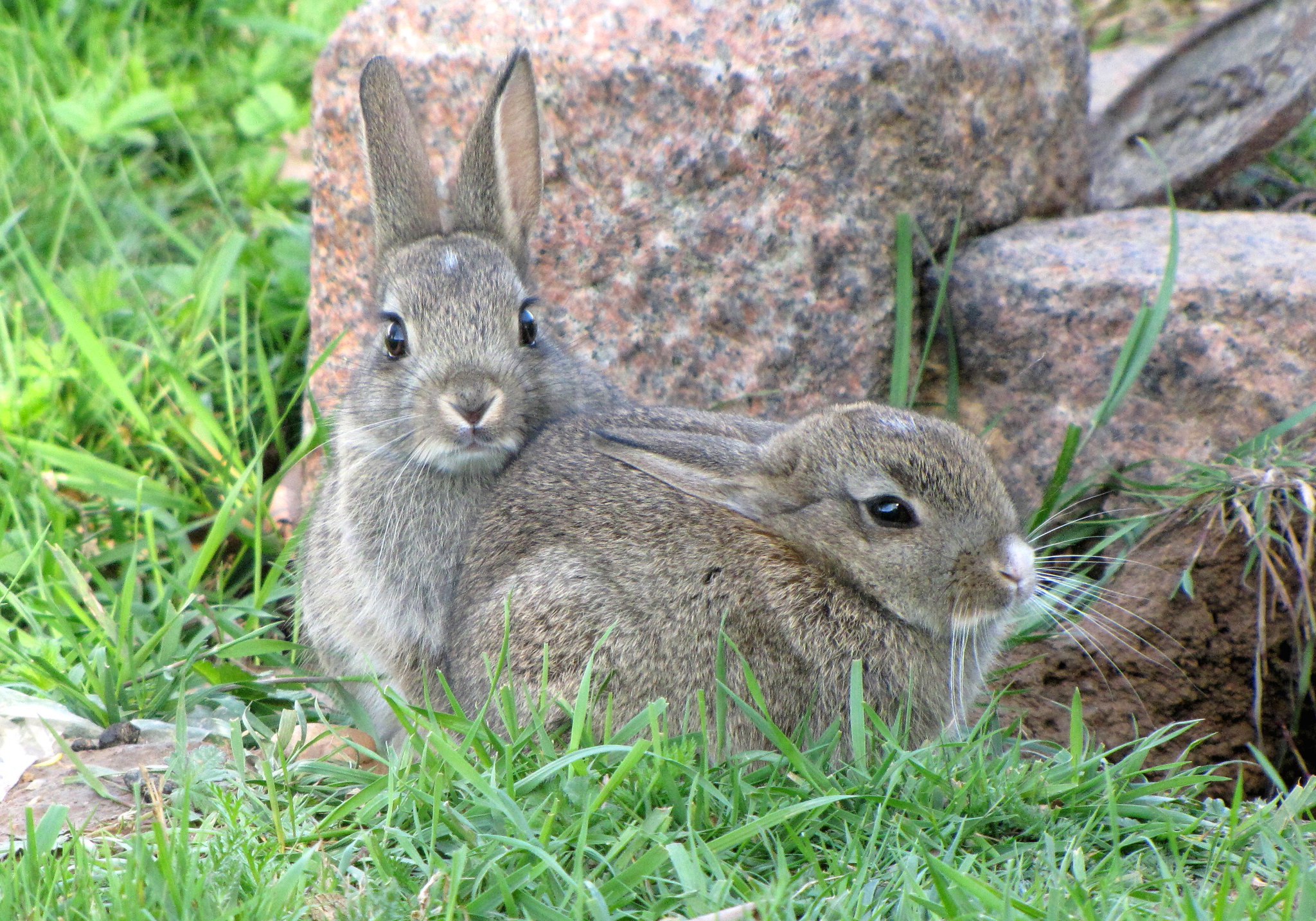
Wild Rabbit:
Caution required due to potential disease transmission.
Observation from a distance is recommended to avoid stress for the wild rabbit.
Domestic Rabbit:
Handling precautions may be needed to prevent scratches or bites.
Regular veterinary care and hygiene practices are important for disease prevention.
Comparison: Both wild and domestic rabbits require precautions when interacting with humans, but the nature of precautions differs.
Ecological Implications: Human interactions with domestic rabbits, especially in the wild, should consider disease transmission risks and potential impacts on both rabbit and human populations.
24. Conservation Status:
Wild Rabbit:
Species-specific conservation statuses vary; some are of least concern, while others may be endangered.
European rabbit, Oryctolagus cuniculus, is considered near threatened in some regions.
Domestic Rabbit:
Not a species under conservation consideration.
Conservation efforts typically focus on wild rabbit species.
Comparison: Wild rabbits may have specific conservation statuses, while domestic rabbits are not conservation priorities as they are widely bred and managed.
Ecological Implications: Conservation efforts need to address the specific needs and threats faced by wild rabbit species to ensure their survival in natural habitats.
*Summary of Comparison
Appearance:
Wild: Natural colors for camouflage.
Domestic: Diverse colors due to selective breeding.
Size:
Wild: Generally smaller for agility.
Domestic: Varies widely based on breed.
Weight:
Wild: Lighter, influenced by natural factors.
Domestic: Heavier, influenced by selective breeding.
Dentition and Bite Force (PSI):
Similar herbivorous dentition, potential variations.
Domestic may have dental differences, impacting ecological role.
Physical Offensive Advantages:
Wild: Sharp claws and teeth for defense.
Domestic: Limited offensive adaptations due to breeding.
Physical Defensive Advantages:
Wild: Agility and burrowing abilities.
Domestic: May rely more on human protection.
Speed:
Wild: Faster, up to 45 km/h.
Domestic: Generally not as fast.
Agility:
Wild: Highly agile for survival.
Domestic: Agility varies, potentially reduced.
Senses:
Similar acute senses, potential variations.
Altered sensory perceptions in domestic may impact adaptation.
Overall Physical Capacity:
Wild: Evolved for natural challenges.
Domestic: Influenced by selective breeding, variable.
Habitat Preference(s) and Geographic Region:
Wild: Natural habitats across continents.
Domestic: Adaptable to human-created environments.
Tracks:
Wild: Distinctive tracks with small paired imprints.
Domestic: Tracks may vary, impacting tracking accuracy.
Lifespan:
Wild: Shorter, influenced by predation.
Domestic: Longer, influenced by breed and care.
Mode of Feeding:
Both herbivorous but diet sources may differ.
Domestic diet may impact ecological role if released.
Intelligence:
Both display intelligence; domestic may vary.
Differences in adaptability and response to challenges.
Social Behavior:
Both exhibit social behavior, variable in domestic.
Impacts integration into natural environments.
Mode of Reproduction:
Similar mechanisms; domestic influenced by breeding.
Ecological impact if domestic rabbits reproduce prolifically in the wild.
Parental Behavior:
Similar instincts, behavioral differences due to breeding.
Varied parental behaviors may impact offspring survival.
Proximity to Human-Inhabited Areas:
Wild: Prefers natural habitats.
Domestic: Often kept in human-inhabited areas.
Behavior Toward Humans:
Wild: Cautious, tendency to flee.
Domestic: Varied behaviors, more tolerant generally.
Danger Posed to Humans:
Both pose minimal danger; domestic may exhibit defensive behaviors.
Associated Precautions:
Precautions needed for both, nature differs.
Consider disease transmission risks and impacts on populations.
Conservation Status:
Wild: Species-specific conservation statuses.
Domestic: Not a conservation priority.
Conclusion
I). Similarities:
Both wild and domestic rabbits share fundamental characteristics as lagomorphs, including herbivorous diets, burrowing instincts, and reproductive strategies.
II). Differences:
Key distinctions arise in appearance, behavior, and ecological roles due to the impact of domestication, selective breeding, and environmental influences. These differences have implications for their interactions within ecosystems and their roles in conservation efforts.

